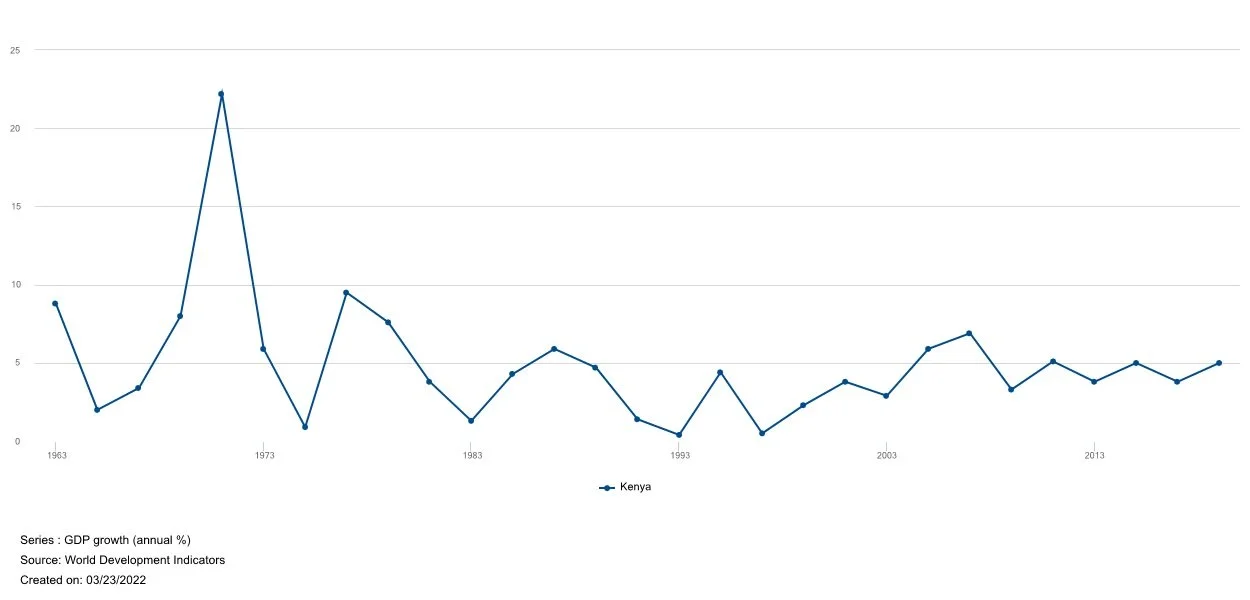Do elections affect our economy ANYMORE?
Kisumu, Kenya - Local vendors selling vegetables at a market. Photo by Miaron Billy; Shutterstock
The 2022 Kenya general elections will take place on 09 August 2022. The lead up to the elections will continue to be characterised by high-intensity campaigns communicating enormous political ambitions. For the ‘common mwananchi’, this is a period of mental and economic anxiety. Consequently, economists have urged Kenyans to focus on growing the economy and reducing political temperatures.
To broaden our understanding of the subject matter, this article will explore the volume of final goods and services produced in Kenya annually, from 1963 to 2020 in order to:
Examine the trends in economic performance during election years
Determine how long it takes to recover economically post-election years
The volume of final goods and services produced at a given time is also known as the Growth Domestic Product (GDP). Noting the fact that GDP growth rates may be affected by other factors such as drought, terrorism and pandemics, this analysis covers 57 years, to minimize the effect of intermittent factors.
Chart 1: Annual GDP Growth Rate Trend in Kenya
The chart above illustrates the GDP growth rate in Kenya from 1963 to 2020. The Table 1 below lists all years when the GDP growth rate was at its highest and lowest. Table 2 shows the general election years in Kenya since independence, and the corresponding GDP growth rate.
Table 1: Summary of GDP Growth Rate (1963 – 2020)
Table 2: Summary of GDP growth rate on election years
According to the World Bank, the single-party period, i.e., 1963 – 1990, saw the GDP growth rate average at 5.43 per cent. However, five general elections were held during this period, and two election years experienced a lower GDP growth rate. The years were 1974 and 1983, which recorded a growth rate of 4.07 per cent and 1.31 per cent respectively.
During the multi-party period, i.e., 1990 – 2017, the GDP growth rate averaged 2.79 per cent. However, six general elections were held during this period, and three election years experienced a lower GDP growth rate. The years were 1992, 1997 and 2002, each recording a growth rate of -0.80 per cent, 0.47 per cent and 0.55 per cent, respectively.
Based on the above analysis, it is evident that the GDP growth rate during single-partyism was higher (5.43 per cent) than during multipartyism (2.79 per cent). It is also worth noting that more election years recorded a lower GDP growth rate during the multipartyism period.
A total of five election years have recorded a lower-than-average GDP growth rate out of the 11 general elections held since our independence.
How long is the recovery period?
Photo by Mary MM; Shutterstock
To determine the number of years, on average, it takes for the economy to recover from a low GDP growth rate, it is important to examine the period it takes to reach the highest GDP growth rate. This is summarized in Table 3 below, as extracted from Tables 1 and 2 above.
Table 3: Average number of years it takes for Kenya to recover economically post-election
From the summary above, it is clear that during the single-party era, it took Kenya an average of 1.5 years to recover from its lowest to the highest GDP growth rate. However, in the multi-party era, it took Kenya an average of 2.1 years for the economy to recover from its lowest to the highest GDP growth rate.
In conclusion, it is evident that elections negatively affect our economy. When this occurs, it takes 2 years on average, for Kenya to recover economically following an election year.





